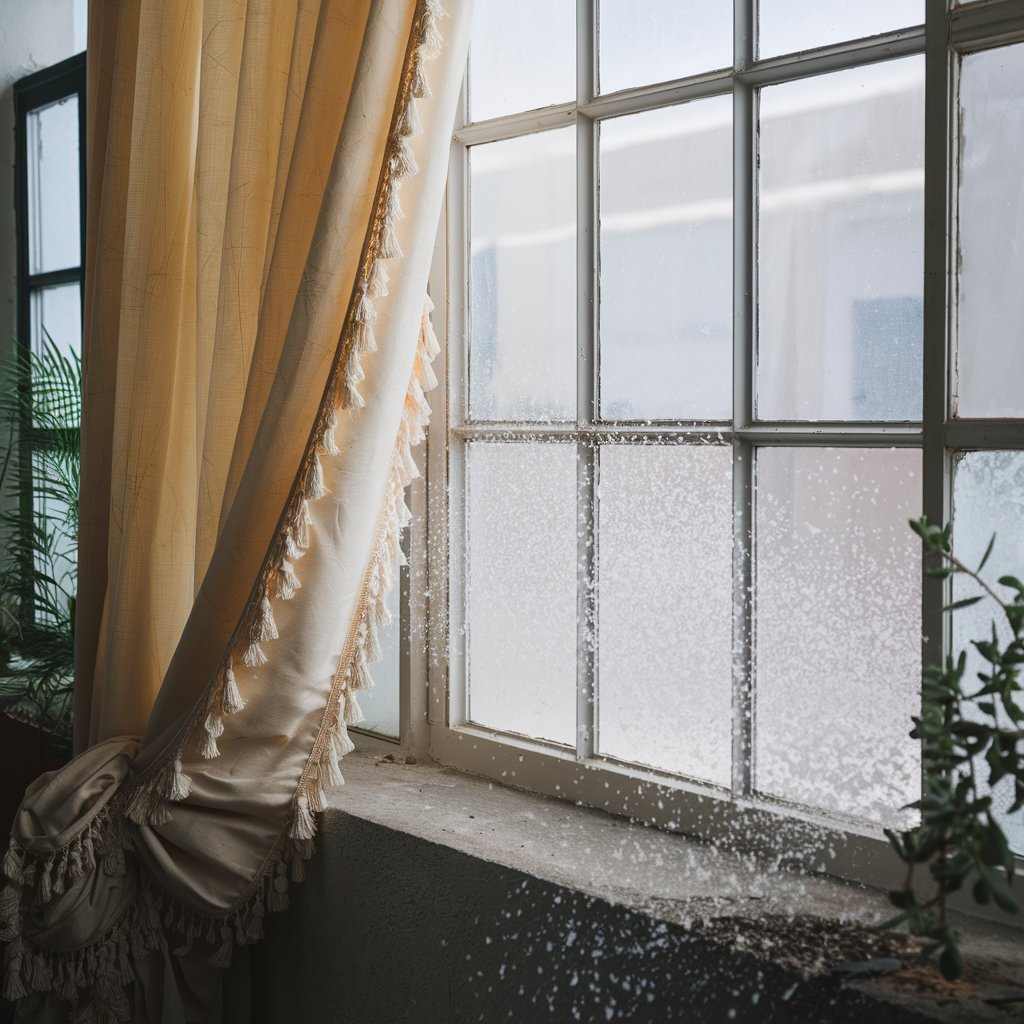Ever felt that icy draft sneaking through your windows, making your cozy home feel like an icebox? It’s frustrating, right? Imagine a winter where your home stays warm and your heating bills don’t skyrocket. Sounds like a dream? Well, it’s possible! In this guide, we’ll explore practical and effective ways to keep cold air from coming through your windows. Let’s dive in and make your home a warm haven this winter.
Why It Matters
Keeping cold air out isn’t just about comfort. It’s about energy efficiency and saving money. Drafty windows can cause your heating system to work overtime, leading to higher energy bills. Plus, who wants to sit in a drafty room? Sealing your windows properly can make a huge difference.
Identifying the Problem Areas
Before you start, identify where the drafts are coming from. Feel around the edges of your windows for any cold air. A simple trick is to use a lit candle or incense stick. Move it around the window frame. If the flame flickers or the smoke wavers, you’ve found a draft.
Tools and Materials You’ll Need
- Weatherstripping: Foam tape, V-strip, or felt.
- Caulk: Silicone or latex caulk.
- Window film: Insulating film kits.
- Draft stoppers: Fabric or foam.
- Thermal curtains: Heavy, insulated curtains.
- Shrink wrap: Plastic shrink wrap for windows.
- Foam sealant: Expanding foam for larger gaps.
Step-by-Step Solutions
Weatherstripping
Weatherstripping is a simple and effective way to seal gaps around your windows. It comes in various forms like foam tape, V-strip, and felt. Here’s how to apply it:
- Clean the area: Ensure the window frame is clean and dry.
- Measure and cut: Measure the length of the window frame and cut the weatherstripping to size.
- Apply: Peel off the backing and press the weatherstripping firmly into place.
Caulking
Caulking seals gaps and cracks around the window frame. It’s perfect for areas where weatherstripping can’t reach.
- Choose the right caulk: Silicone caulk is great for exterior use, while latex caulk works well indoors.
- Prepare the area: Clean and dry the window frame.
- Apply the caulk: Use a caulking gun to apply a smooth, even bead of caulk along the gaps.
- Smooth it out: Use a caulk smoothing tool or your finger to smooth the caulk.
Window Film
Window film adds an extra layer of insulation. It’s a great option for older windows.
- Clean the window: Ensure the glass is clean and dry.
- Cut the film: Measure and cut the film to fit your window.
- Apply the film: Use double-sided tape to attach the film to the window frame.
- Shrink the film: Use a hairdryer to shrink the film, creating a tight seal.
Draft Stoppers
Draft stoppers are an easy fix for gaps at the bottom of windows. You can buy them or make your own.
- Measure the window: Measure the width of the window.
- Choose a stopper: Select a fabric or foam draft stopper.
- Place the stopper: Position it snugly at the bottom of the window.
Thermal Curtains
Thermal curtains are heavy, insulated curtains that block cold air. They also add a cozy touch to your home.
- Choose the right curtains: Look for curtains with thermal lining.
- Install curtain rods: Ensure the rods are sturdy enough to hold heavy curtains.
- Hang the curtains: Hang the curtains and make sure they cover the entire window.
Shrink Wrap
Shrink wrap is another effective way to insulate windows. It’s similar to window film but covers the entire window frame.
- Clean the window: Ensure the window and frame are clean.
- Apply the wrap: Use double-sided tape to attach the wrap to the frame.
- Shrink the wrap: Use a hairdryer to shrink the wrap, creating a tight seal.
Foam Sealant
For larger gaps, foam sealant is a great option. It expands to fill gaps and provides excellent insulation.
- Clean the area: Ensure the gap is clean and dry.
- Apply the foam: Use a foam sealant gun to apply the foam.
- Let it expand: Allow the foam to expand and fill the gap.
- Trim the excess: Once the foam has dried, trim any excess with a utility knife.
Common Mistakes to Avoid
- Using the wrong materials: Not all weatherstripping and caulk are created equal. Choose the right type for your needs.
- Skipping the cleaning step: Dirt and moisture can prevent materials from sticking properly.
- Ignoring small gaps: Even tiny gaps can let in a lot of cold air. Seal them all.
Long-Term Solutions
While the above methods are effective, consider long-term solutions for even better insulation.
Replace Old Windows
Old windows can be a major source of drafts. Replacing them with energy-efficient windows can make a huge difference.
- Choose energy-efficient windows: Look for windows with a high energy rating.
- Hire a professional: Window replacement can be complex. Hiring a professional ensures it’s done right.
Install Storm Windows
Storm windows add an extra layer of protection against the cold.
- Measure your windows: Measure the dimensions of your existing windows.
- Choose storm windows: Select storm windows that fit your needs.
- Install: Follow the manufacturer’s instructions for installation.
Conclusion
Keeping cold air from coming through your windows doesn’t have to be a daunting task. With the right tools and techniques, you can make your home warm and cozy all winter long. Remember, a little effort goes a long way. Seal those drafts, save on energy bills, and enjoy a comfortable home. Happy insulating!







